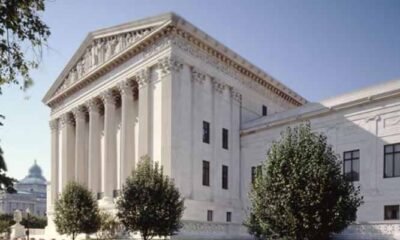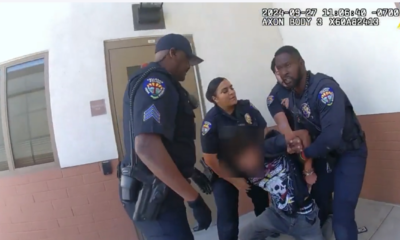Business
Supreme Court Ruling: Biden’s Student Loan Repayment Plan Remains Under Lock and Key

In a significant decision that extends the uncertainty around student loan repayment, the Supreme Court has chosen to keep President Joe Biden’s SAVE (Saving on Valuable Education) program on hold. On Wednesday, the court denied two emergency applications related to the plan, which aims to alleviate the burden of student debt for millions of Americans.
The legal challenges to the SAVE program arose from a coalition of nearly two dozen Republican-led states. These states sought to block the Biden administration’s efforts to provide relief, which had already been hindered by lower court rulings. The Eighth Circuit previously issued a stay against the program on July 18, a decision it later reinforced on August 9.
During this legal battle, the Biden administration submitted a competing emergency application, hopeful to reinstate the repayment plan. However, the Supreme Court ultimately let the lower court’s injunction remain intact, indicating that the states no longer required relief given the existing legal block.
While the court did not elaborate on its decision regarding the Biden administration’s application, it indicated anticipation for a prompt ruling from the Court of Appeals. This case is expected to eventually return to the Supreme Court for a more thorough examination of its merits.
Education Secretary Miguel Cardona expressed concern over the implications of the ruling, which he described as potentially forcing borrowers to incur hundreds of dollars more in monthly payments. He emphasized the negative impact on those hoping for loan forgiveness after 25 years of repayment, calling it “shameful” that political motives were obstructing financial relief for millions.
The SAVE program is designed to adjust loan payments based on borrowers’ income and household size, effectively reducing financial strain. Yet, its implementation faced hurdles when a group of 11 states sued in March, leading to a preliminary injunction that was later narrowed to just three states: South Carolina, Alaska, and Texas.
The Department of Education had to pause the enforcement of the SAVE plan until the 10th Circuit intervened. In addition, a similar lawsuit emerged from seven states led by Missouri, arguing that the Missouri Higher Education Loan Authority would face financial losses due to the plan. Notably, this loan servicer has been central to previous challenges against Biden’s student debt relief initiatives.
A conservative majority in a previous 6-3 Supreme Court ruling had asserted that Biden’s $430 billion debt relief initiative exceeded executive authority, thereby requiring congressional approval. The same principle was invoked by Republican-led states against the SAVE repayment plan. South Carolina’s legal team argued that the financial implications of the program warranted the court’s consideration.
In its brief, the state suggested alternatives to merely pausing the SAVE program, advocating for a deeper legal assessment or outright dismissal of the plan based on the Supreme Court’s earlier rulings. The Biden administration has cautioned that any pause would complicate matters, necessitating an extension of the forbearance period to recalibrate payments for millions of affected borrowers.


















